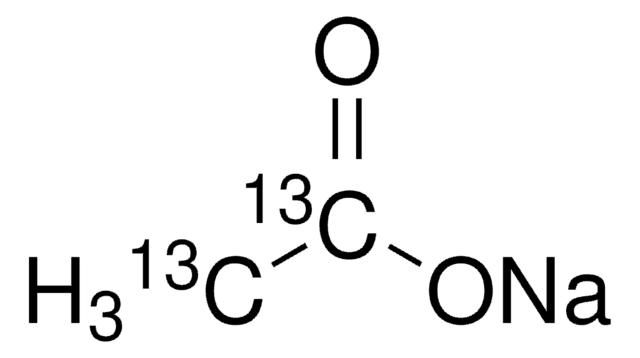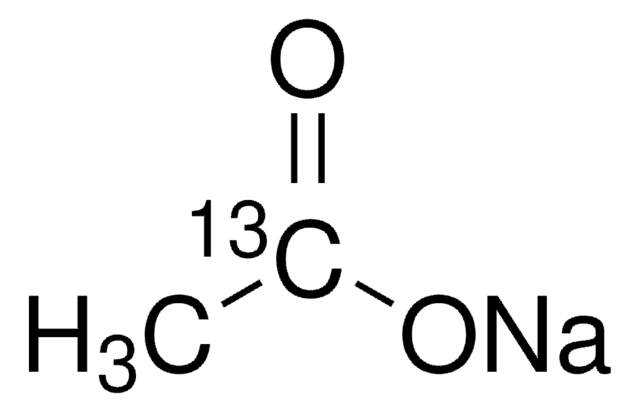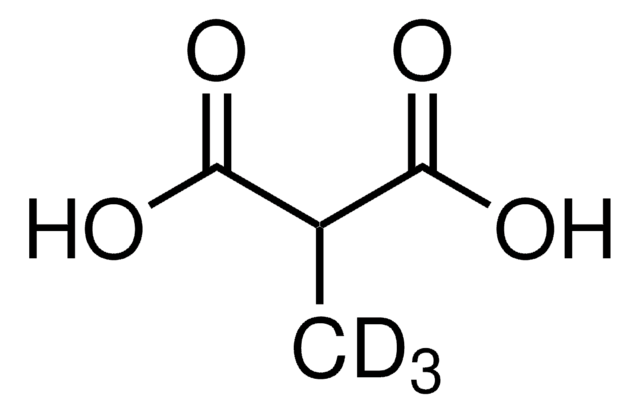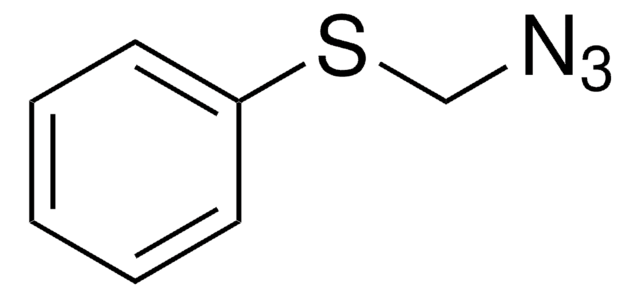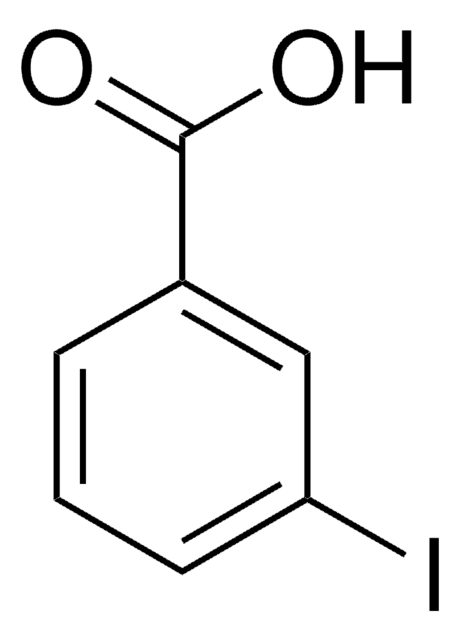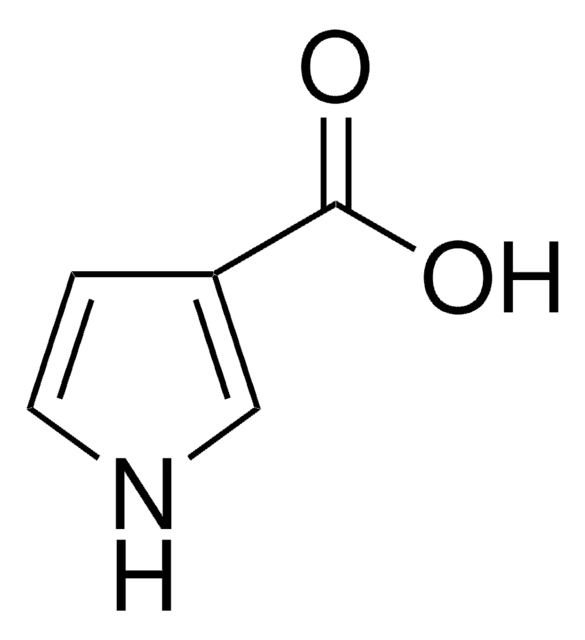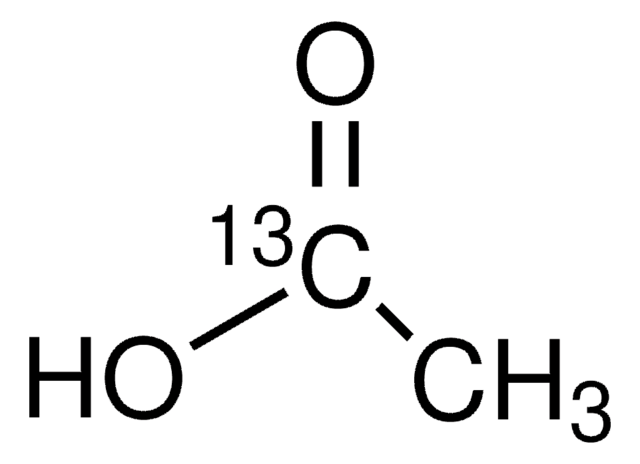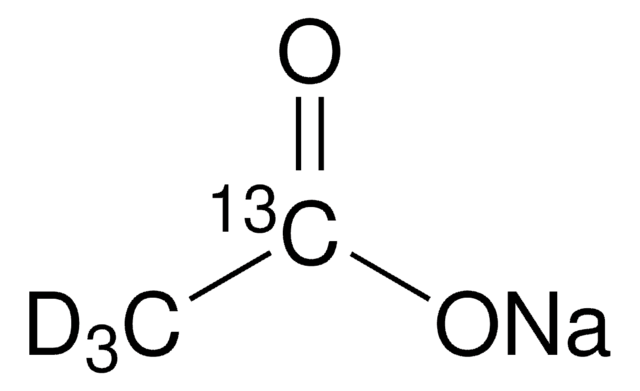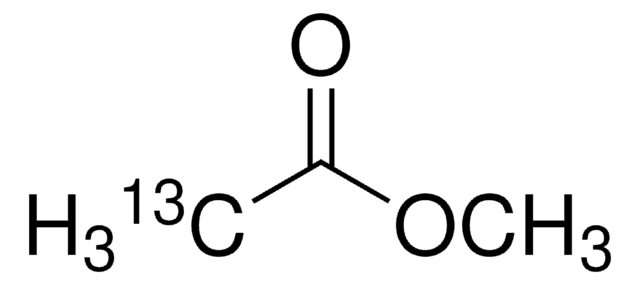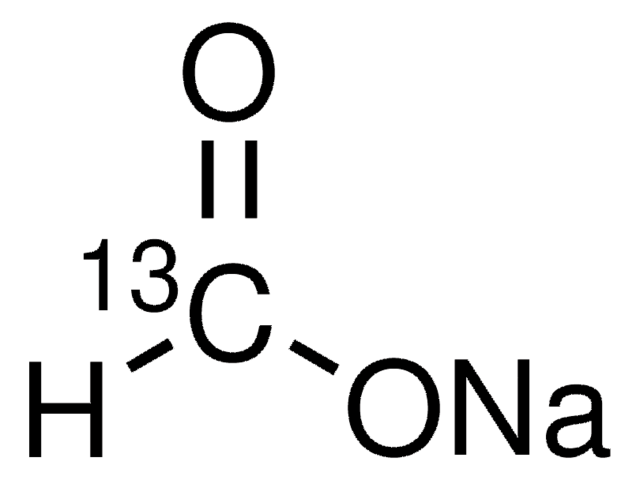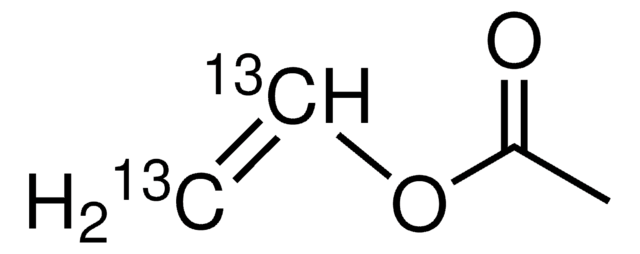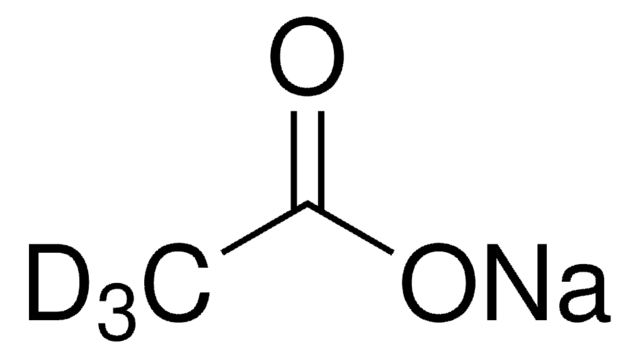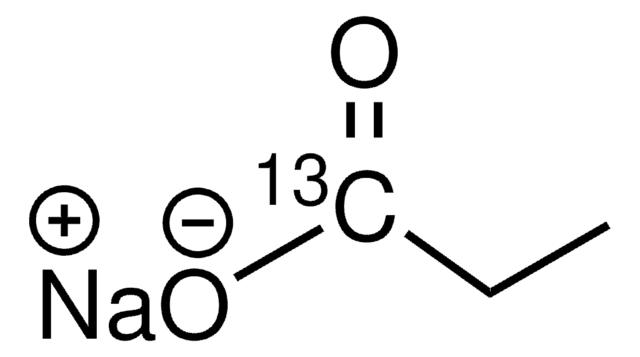279315
Sodium acetate-2-13C
99 atom % 13C
Synonyme(s) :
Acetic-2-13C acid sodium salt
About This Item
Produits recommandés
Pureté isotopique
99 atom % 13C
Niveau de qualité
Forme
solid
Technique(s)
bio NMR: suitable
protein expression: suitable
Pf
>300 °C (dec.) (lit.)
Changement de masse
M+1
Chaîne SMILES
[Na+].[13CH3]C([O-])=O
InChI
1S/C2H4O2.Na/c1-2(3)4;/h1H3,(H,3,4);/q;+1/p-1/i1+1;
Clé InChI
VMHLLURERBWHNL-YTBWXGASSA-M
Vous recherchez des produits similaires ? Visite Guide de comparaison des produits
Catégories apparentées
Description générale
Application
Conditionnement
Code de la classe de stockage
11 - Combustible Solids
Classe de danger pour l'eau (WGK)
WGK 1
Point d'éclair (°F)
Not applicable
Point d'éclair (°C)
Not applicable
Certificats d'analyse (COA)
Recherchez un Certificats d'analyse (COA) en saisissant le numéro de lot du produit. Les numéros de lot figurent sur l'étiquette du produit après les mots "Lot" ou "Batch".
Déjà en possession de ce produit ?
Retrouvez la documentation relative aux produits que vous avez récemment achetés dans la Bibliothèque de documents.
Les clients ont également consulté
Articles
We present an article about the hyperpolarization of 13C labeled metabolites, especially pyruvic acid, using dynamic nuclear polarization (DNP) that allows real-time magnetic resonance spectroscopy.
Dynamic Nuclear Polarization (DNP) is a phenomenon by which high spin polarization, typically derived from a bath of free radical electrons, is transferred to a nuclear spin bath, enhancing the difference between the nuclear energy levels and thereby producing dramatically enhanced NMR signals for detection.
Sigma-Aldrich.com presents an article concerning MRI/MRS and the use of isotopes in hyperpolarization.
Notre équipe de scientifiques dispose d'une expérience dans tous les secteurs de la recherche, notamment en sciences de la vie, science des matériaux, synthèse chimique, chromatographie, analyse et dans de nombreux autres domaines..
Contacter notre Service technique